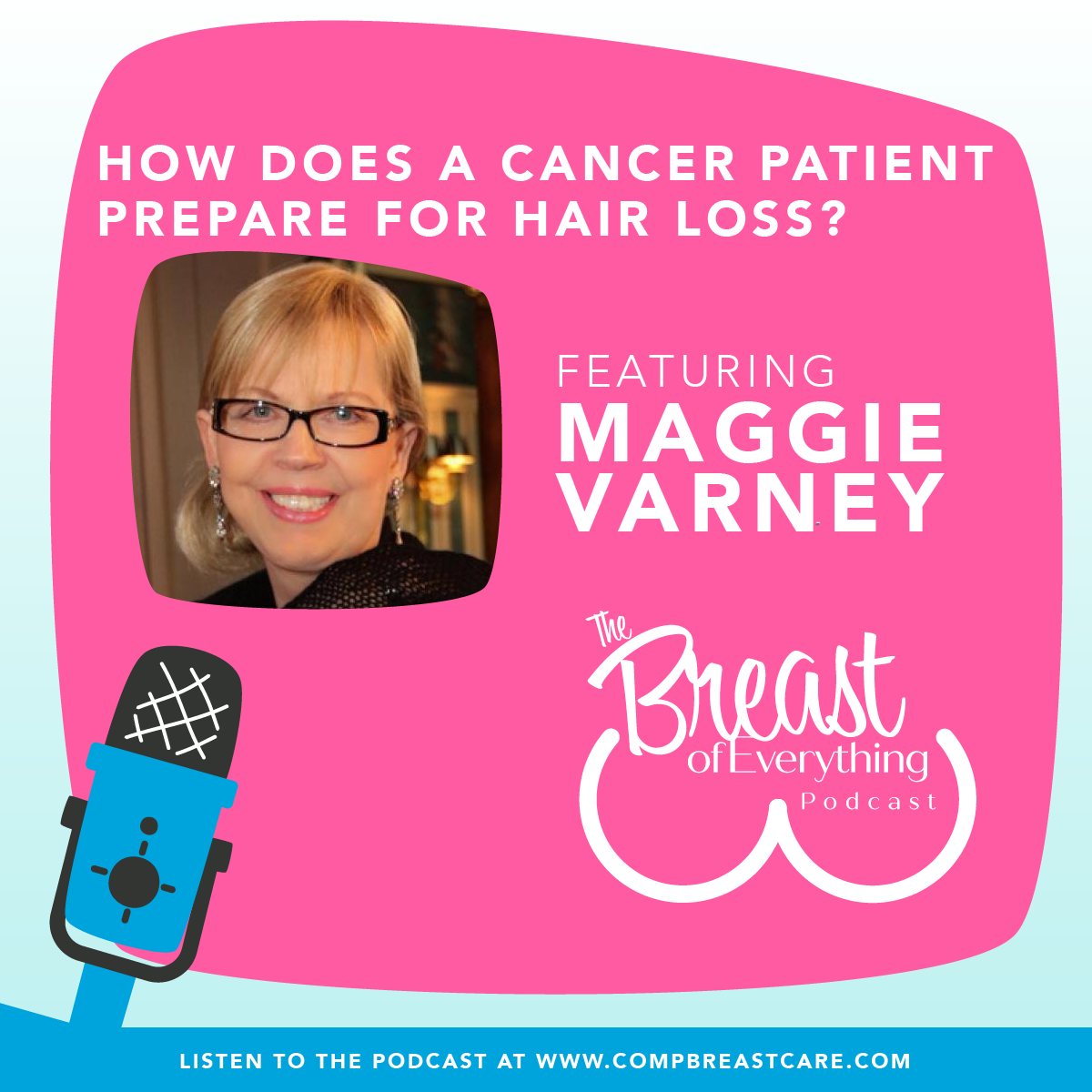Maggie Varney on
How does a cancer patient prepare for hair loss?
“It’s not just about the wig, it is about normalcy and self-esteem when wearing it. I guide women through these choices so they will feel good about themselves in their new headwear.”

How does a cancer patient prepare for hair loss? “I don’t think any woman ever is prepared,” announces Hair Restoration Specialist Maggie Varney. The licensed cosmetologist and facilitator for the American Cancer Society’s “Look Good, Feel Better” program, was a featured guest on The Breast of Everything podcast, hosted by Comprehensive Breast Care Surgeon Ashley Richardson, DO, FACOS.
Maggie finds that women go through surgery, radiation and chemotherapy, but when they start losing their hair, they are telling the world they have cancer; they can’t hide it anymore. “This really is a struggle for patients,” she says. “Women want to keep looking good while they are undergoing treatment. If you look good, you feel good about yourself. Women want to maintain their outward appearance. They do not want people to look at them and think, ‘she has cancer.’
That is the mission of “Look Good, Feel Good,” the American Cancer Society’s (ACS) program that helps women find some sense of normalcy during their cancer journey. This free service is for anyone with cancer. The ACS provides kits with makeup, skin care and other cosmetics to help women look good and feel good. Maggie provides “how to” workshops on applying makeup, adding eyebrows, using skin care products, choosing a wig or headwear, and how to do it all safely.
“Not everyone wants to wear a wig,” she notes. Some women prefer headwear, while others want to focus on beautiful eyebrows; they have many choices to maintain their outward appearance.
When selecting a wig, Maggie encourages women to meet with her (or another hair restoration specialist) before hair loss starts. That way she can recommend a suitable wig that will closely resemble their natural hair if that is what she wants, she notes. “Most importantly, if the wig is not comfortable, you are not going to wear it.” That is why she discourages women from buying through catalogues or online. Wig texture, cap construction, color, density and price are just a few decisions to make. Some wigs are made of natural human hair, while others are made from synthetic materials. Synthetic wigs are less expensive, hold their style regardless of the weather and don’t fade over time. They look and feel a lot like natural hair, but they don’t last as long. Maggie also will provide sizing, styling and wig care tips.
“It’s not just about the wig, it is about normalcy and self-esteem when wearing it. I guide women through these choices so they will feel good about themselves in their new headwear,” Maggie points out.
She also suggests patients check their health insurance to see if wigs are covered. Some insurances may help cover the cost. Medicare Part A and Part B do not cover the costs of wigs, but they may be a tax-deductible expense. If you cannot afford a wig, talk with a social worker at your treatment center who may know of resources that will offer some financial assistance.
Maggie also reminds women undergoing treatment to use caution when getting manicures and pedicures. Chemotherapy patients have a compromised immune system, that is why she urges caution with nail and foot care. Be super vigilant about cleanliness and places that can harbor extra bacteria, and do not cut your cuticles, she urges. Cuticles protect the nail bed from germs. Cutting them away leaves a person open to infection.
Maggie also recommends finding a cancer support group near you where you can exchange ideas and ask questions
Celebrate your life … every day, she announces.
